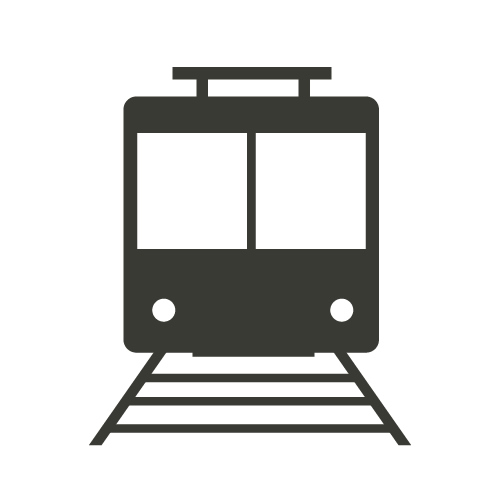Donald Trump May Slam the Brakes on Public Transit Expansion
There’s no bill yet, and already the future of transportation infrastructure looks bleak
Victor LuckersonFollow
Staff Writer, The Ringer, April 5, 2017
One of Donald Trump’s many campaign promises was to rebuild America’s crumbling infrastructure. He’s been talking about it since the day he announced his campaign, and in characteristic excess, has attached a $1 trillion price tag to the initiative. The vague plan resurfaced on Tuesday, when President Trump invited more than 50 business leaders to the White House to discuss using infrastructure projects to goose economic growth. He promised to eliminate the bureaucratic red tape associated with government projects and hinted that the bill’s final price tag might even exceed $1 trillion. But details such as how the initiative will be funded, what sorts of projects will be prioritized, or even when a bill will be formally unveiled remain elusive. Right now the administration is signaling that a formal bill may come down the pipeline in May.
A plan to revitalize America’s roads, rails, and airports would appear to be, on its surface, apolitical. Who doesn’t want to fill in potholes or fix the L train faster? But a recent set of proposed federal budget cuts and federal transportation budget cuts appear to indicate that “infrastructure” comes with a political agenda all its own, and it’s not one likely to prioritize public transit.
Last month, Trump released his proposed 2018 budget, complete with a 13 percent budget cut for the Department of Transportation. The savings would come in part from lowering funding for Amtrak’s long-distance routes and cancelling funding for various local transit projects set to receive federal aid, including the expansion of New York’s new Second Avenue subway line and a light rail system in Durham, North Carolina . Overall, nearly a dozen cities and counties across the country could see their transit funding cut if the budget is approved by Congress.
Just a few weeks before this, the Trump administration delayed $647 million in federal funding to boost the speed of Caltrain, a Bay Area commuter rail line, at the behest of some Republican congressmen from California who have deemed the state’s major train projects too expensive. Plans to electrify the line to boost train speeds have been in the works for more than a decade, but GOP legislators are trying to curtail both this project and a more ambitious commuter rail between San Francisco and Los Angeles that voters approved funding for in 2008. “The Caltrain electrification was a project that a lot of people thought would go forward and a lot of people thought should go forward,” says Michael Manville, an assistant professor of urban planning at UCLA. “The fact that it seems to have been singled out for a cut might suggest that future Republican infrastructure plans won’t include transit.”
Together, these moves offer a window into the types of projects that the Trump administration may put on the chopping block. This matters now because at the same time Trump is choking off transit projects, urban dwellers are voting for some of the most ambitious public transportation expansions in memory. Seattle passed a $54 billion expansion to its light rail system, one of the largest local transit projects in U.S. history. Los Angeles voters agreed to a tax hike that will generate $120 billion for transportation projects. Around the country, voters in Atlanta, Charleston, and Raleigh also approved mass transit expansions. As cities swell with more people, urban dwellers are demanding more efficient transportation options, and are even willing to open their wallets to pay for them. “If you see a plethora of new transit initiatives, then that’s a reflection of what the sentiment is,” says P.S. Sriraj, director of the Urban Transportation Center at the University of Illinois at Chicago.
It’s easy to see this split in priorities as a political one. Public transportation systems typically benefit people in cities, who voted overwhelmingly for Hillary Clinton in November and are represented by Democrats in Congress. Trump’s allegiance is to his base. “If you get elected by rural states that want roads, and you’re opposed 70–30 or 80–20 in big urban areas, then it’s a real easy thing to say, ‘We’re gonna take all that transit money and we’re gonna reallocate it to rural highways,’” says Mark Hallenbeck, director of the Washington State Transportation Center at the University of Washington.
So is that Trump’s grand design? Will constituents in rural areas benefit from his cuts? At the moment, there’s no way to know for sure since the details of his infrastructure bill have been perpetually delayed (the current rumor is that the plan will be fast-tracked to compensate for his recent failure on health care reform). Sriraj thinks it’s unlikely the federal government would suck transit funding completely dry. “Public transportation now has the largest infrastructure inventory apart from the highway,” he says. “It would make sense to invest in that system because it’s going to ease congestion on the road system. It’s going to be the prudent thing to do. … My gut would be that there will be some money for improving existing systems, at least in the major metropolitan areas.”
Still, a long-term reduction in federal transit funding could slow public works projects that are already notorious for being fraught with delays. The plan for Seattle’s light rail expansion, for example, was developed with the expectation of $4.7 billion in federal grants. If that money doesn’t show up, certain lines on the system might have to be delayed or not built at all, Hallenbeck says. Other communities could face the same conundrum.
Even if Trump’s infrastructure bill isn’t explicitly anti-transit, the way it’s funded may not encourage public transportation projects. Trump officials have indicated that the infrastructure plan will lean heavily on private investment, incentivized through generous tax credits for companies. But businesses would rather bid on contracts for moneymaking ventures like toll roads than train or subway systems, which typically lose money. The most straightforward way to pay for infrastructure is by raising taxes, but Trump has pledged to cut them. And spending big on money-losing infrastructure ventures without paying for them would boost the deficit, which probably wouldn’t fly in a Republican-controlled Congress. “The Republicans in general have held a view that investments in local transportation should not be heavily supported by the federal government,” says Manville. “The basic logic being that if you are a taxpayer in rural Iowa, it doesn’t make sense for you to be supporting a subway that carries people from one end of Los Angeles to another. Insofar as now we have a Republican president and a Republican Congress, it shouldn’t surprise us if public transportation gets called back in the federal budget.”
The unlikely savior for mass transit in the Trump era could be, believe it or not, Elon Musk. The entrepreneur has started a company to build tunnels under Los Angeles to transport cars and high-speed trains. He conceived of a new high-speed mass transit system called Hyperloop, and two independent startups are now competing fiercely to bring his idea to reality, though the technology is still highly speculative. And during the Obama era, Musk already showed he could convince the government to pay either his companies (via NASA contracts at SpaceX) or his customers (via tax credits for people who buy Teslas).
Now Musk is trying to charm Trump to advance his goals. He’s made multiple trips to Trump Tower and the White House, and in March he was named an adviser to Trump’s newly formed Office of American Innovation, which aims to run the government “like a great American company,” in the words of project lead and Trump in-law Jared Kushner.
But even if Trump and Musk end up working together on headline-grabbing transit initiatives, that doesn’t mean the transit agencies shuttling people around on mundane daily commutes will get funding as well. And with Trump currently licking his wounds over the collapse of his health care bill, it’s not clear when to expect another big legislative battle over the way we travel. Future plans are, as always with Trump, an open question. “What that exact formula is [for transportation funding] changes from area to area, from state to state, from administration to administration,” Hallenbeck says. “They’re criteria that you get to reinvent every time someone else comes to power.”
Citizens Taking Action for public transit
Overall, nearly a dozen cities and counties across the country could see their transit funding cut if the budget is approved by Congress.


